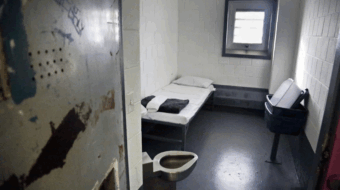
“George Bush isn’t on the ballot this November, but his agenda is and the representatives in Congress who have rubber-stamped his priorities are,” AFL-CIO President John Sweeney told reporters at a national press conference Aug. 30.
Indeed, rather than an off-year effort, the extensive election mobilization plan laid out by Sweeney and federation Political Director Karen Ackerman as the election season enters the home stretch is worthy of a presidential campaign. The AFL-CIO is spending an unprecedented $40 million solely on its member-to-member mobilization efforts. No contribution to candidates or campaigns will come out of this fund.
Despite a split in the federation last year which saw seven affiliated unions leave to form a new labor federation, Change to Win, Sweeney reported that at the local level, where the mobilization takes place, “we are finding that labor is as united as in the past.”
“I think we will have a very united political effort,” he said.
The effort will be concentrated on 56 House, 15 Senate and 14 gubernatorial races in 21 states. The goal is to improve turnout from union households by 10 points over the last midterm election, which took place in 2002. Sophisticated data analysis techniques will identify voters who voted in the 2004 presidential race but were absent at the polls in 2002, Ackerman said.
There are 12.4 million union-related voters in these 21 states, including 5.3 million active members, 1.5 million retirees, 4.6 million spouses and adult children of union members and 1.5 million members of Working America. Working America is the new AFL-CIO affiliate that allows people who are not in organized work places to be part of the AFL-CIO.
The emphasis of the mobilization will be on “pocketbook” issues, Sweeney said. The census data he cited reveals median earnings for full-time workers falling in 2005, “out of sight” household debt, 5 million more Americans without health care and 5 million more falling into poverty since 2001.
In the 2004 election, the focus of the AFL-CIO’s work was “persuasion,” Ackerman said. “This year our focus is on turnout.”
Union members get political information at work sites, at home and through phone and e-mail, she explained. In the targeted 21 states, while 46 percent were contacted at work in 2002, 55 percent will get the message there this year. Neighborhood walks reached 5 percent in 2002; this year’s goal is 8 percent. Phone contact will go up from 36 percent to 50 percent and Internet programs will reach 20 percent, up from 10 percent in 2002.
Besides talking to union family members during neighborhood walks, specific mailings will go out to spouses and adult children addressing issues of concern to them.
“If we meet our goals, we will contribute more than 1.2 million more votes for our endorsed candidates than we were able to in 2002,” Ackerman said.
The results of this could easily be the margin of victory. In Ohio, for example, the AFL-CIO plan projects 310,000 additional votes over 2002 which could go to Senate candidate Sherrod Brown and gubernatorial candidate Ted Strickland, or about 5 percentage points. In that state’s 15th Congressional District, it would add 27,000 votes for labor-endorsed candidate Mary Jo Kilroy, or about 10 percentage points.
Working with both national organizations and local coalitions, the AFL-CIO is putting together voter protection programs in eight to 10 states for communities where people of color are concentrated, Ackerman said.
Sweeney reported the AFL-CIO has reached agreements with “the majority” of the Change to Win unions, although he declined to name them, to work together on AFL-CIO political programs.
Change to Win spokesperson Carole Florman told the World that the federations have in place an agreement to work together “where it makes sense.” While CTW has political activities in 50 states, it is concentrating on the gubernatorial and Senate races in three — Michigan, Pennsylvania and Ohio. Governor’s races are important, she said, because “governors have the ability to level the playing field,” having an immediate impact on conditions affecting working people.
At the Aug. 30 press conference, Sweeney remarked that the AFL-CIO’s recent organizing successes were “just as important” as political action. He singled out four affiliates: the Auto Workers, the Communications Workers, the American Federation of Teachers and AFSCME, which together have allocated $100 million for organizing. The UAW, he said, has signed up 50,000 heavy manufacturing workers, mostly in the South, in the last three years. CWA has organized 18,000 high-tech workers and also brought in 40,000 Cingular wireless employees. Working America has opened seven new offices and grown to 1.5 million members. Sweeney also pointed to the AFL-CIO’s new partnerships with the National Education Association and with the nation’s largest organization of worker centers that work with day laborers.
rwood@pww.org









